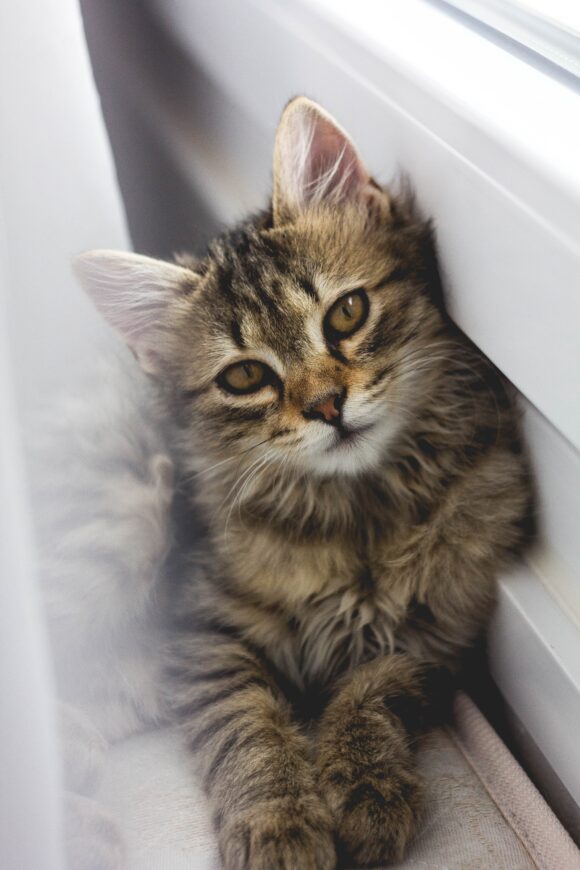Understanding Cat Behavior: A Comprehensive Guide
If you’ve ever found yourself puzzled by the quirky behavior of your feline friend, “Understanding Cat Behavior: A Comprehensive Guide” is here to help. This guide offers cat owners a wealth of invaluable insights and practical tips to better understand their beloved pets. From decoding their body language to tackling common behavioral issues, this comprehensive resource is designed to empower cat owners with the knowledge they need to forge a deeper bond with their furry companions. With “Understanding Cat Behavior: A Comprehensive Guide,” you’ll unlock the secrets behind your cat’s unique behaviors and strengthen the connection between you and your feline friend.

Understanding Cat Behavior: A Comprehensive Guide
Cats have unique and fascinating behaviors that can sometimes leave their owners puzzled. Understanding these behaviors is crucial for building a strong and harmonious bond with your feline friend. In this comprehensive guide, we will explore various aspects of cat behavior, from basic behaviors to communication, territory and marking, aggression, social behavior, play behavior, litter box habits, eating and drinking habits, sleeping patterns, and grooming behavior. By gaining insight into these areas, you will be better equipped to decode your cat’s actions and provide them with a happy and enriched life.
1. Basic Cat Behavior
1.1. Sensory Abilities
Cats possess remarkable sensory abilities that play a significant role in their behavior. From their acute hearing and exceptional night vision to their highly sensitive whiskers and sense of smell, cats rely on these senses to navigate their environment. Understanding their superior senses can help pet owners comprehend why cats might react in certain ways, such as being startled by sudden noises or exhibiting hunting behavior.
1.2. Daily Routines
Cats are creatures of habit and tend to follow a consistent daily routine. They have their own unique schedule that revolves around periods of sleep, play, grooming, and mealtimes. Recognizing and respecting your cat’s natural routine ensures they feel secure and helps prevent stress-related issues.
1.3. Behavioral Patterns
By observing and analyzing your cat’s behavioral patterns, you can gain valuable insight into their emotions and overall well-being. Behaviors such as kneading, tail flicking, or hiding can convey various messages. Understanding these patterns allows you to provide a nurturing and comfortable environment for your cat.
2. Communication
Cats communicate in a variety of ways, both with humans and other cats. Understanding their communication techniques is essential for building a strong bond with your cat and enhancing your ability to interpret their needs and desires.
2.1. Vocalizations
Cats use an array of vocalizations, including meowing, purring, hissing, and growling, to convey their emotions. Each vocalization carries a different meaning, and by learning to decipher these sounds, you can better understand what your cat is trying to express.
2.2. Body Language
A cat’s body language provides essential clues about their mood and intentions. From the position of their tail and ears to the posture of their body, each movement is a form of communication. By paying close attention to these subtle cues, you can determine if your cat is feeling relaxed, fearful, or aggressive.
2.3. Scent Marking
Cats have a strong sense of smell and use scent marking as a way to communicate with other cats. They do this by rubbing their bodies against objects, scratching furniture, or spraying urine. Understanding these marking behaviors can help you create a suitable environment for your cat and minimize potential conflicts with other furry companions.
3. Territory and Marking
3.1. Defining Territory
Establishing a territory is a vital part of a cat’s behavior. Cats are naturally territorial animals and will mark their territory to communicate ownership and establish boundaries. Recognizing the importance of territory for your cat’s well-being can help you create a space where they feel secure and content.
3.2. Scent Marking Behaviors
Scent marking is a significant aspect of cat behavior. Cats use their scent glands to leave their unique scent on objects in their environment. By understanding why cats engage in scent marking behaviors, you can address any issues related to inappropriate marking and promote a harmonious living environment.
3.3. Spraying and Urine Marking
One common scent marking behavior in cats is spraying or urine marking. This behavior may occur for various reasons, such as territorial disputes, anxiety, or marking their territory during mating season. Recognizing the triggers and addressing any underlying causes can help manage and prevent spraying incidents in your home.

4. Aggression
Cats, like any other animal, can exhibit aggressive behavior. Understanding the different types of aggression and their underlying causes allows you to address these issues effectively and ensure the safety and well-being of both your cat and yourself.
4.1. Types of Aggression
Aggression in cats can manifest in various forms, such as play aggression, fear aggression, territorial aggression, redirected aggression, or inter-cat aggression. Each type requires a specific approach and understanding to manage and prevent further incidents.
4.2. Causes of Aggression
Several factors can contribute to aggressive behavior in cats, including genetics, past experiences, fear, stress, or illness. Identifying the root cause of aggression is crucial in developing a tailored behavior management plan that addresses the underlying issues.
4.3. Managing Aggressive Behavior
Managing and modifying aggressive behavior requires a multifaceted approach that involves understanding the triggers, providing appropriate outlets for energy and predatory behavior, implementing positive reinforcement techniques, and, in some cases, seeking the assistance of a professional behaviorist.
5. Social Behavior
Cats have complex social interactions, both with humans and other cats. Understanding their social structure and behavior is essential for creating a harmonious and enriching environment for your cat.
5.1. Social Structure
Cats have a hierarchical social structure within their colonies. They have a distinct social order that affects their behavior and interactions with other cats. Recognizing and respecting their social structure can help prevent conflicts and create a balanced and happy environment for your feline companion.
5.2. Interactions with Humans
Cats display a wide range of behaviors when interacting with humans. From head-butting and rubbing against legs to grooming and kneading, each behavior carries a specific meaning. Understanding these behaviors can help strengthen the bond between you and your cat and ensure a positive and fulfilling connection.
5.3. Relationships with Other Cats
If you have multiple cats in your household, understanding their social behavior is crucial for ensuring a peaceful coexistence. Cats can form strong bonds with each other and engage in various social behaviors, including grooming, playing, or sharing sleeping spaces. Establishing a positive and comfortable atmosphere for all cats is essential to prevent conflicts and aggression.
5.4. Introduction to New Cats
Introducing a new cat to your existing feline household requires careful consideration and proper introductions. Cats are territorial animals and can be resistant to change. By following a gradual introduction process and providing a calm and supportive environment, you can increase the chances of a successful integration and minimize stress for all involved.

6. Play Behavior
Play is an essential aspect of a cat’s life. It helps them stay mentally and physically stimulated, mimics hunting behavior, and strengthens the bond between you and your cat. Understanding the importance of play and providing appropriate outlets for your cat’s playful instincts is crucial for their overall well-being.
6.1. Importance of Play
Play provides numerous benefits for cats, including exercise, stress reduction, mental stimulation, and the opportunity to practice their hunting skills. Regular play sessions are essential for preventing boredom-related behavior problems and ensuring a happy and healthy cat.
6.2. Types of Play
Cats engage in different types of play, such as solitary play, interactive play with humans, and social play with other cats. Each type serves a specific purpose and offers unique benefits. Understanding and providing a variety of play options can keep your cat engaged and satisfied.
6.3. Toys and Games
Choosing the right toys and games for your cat is crucial for their enjoyment and safety. Cats have individual preferences when it comes to toys, so it may take some trial and error to find the ones that truly captivate your feline companion. Exploring different toys, such as interactive puzzles or wand toys, can provide mental stimulation and enhance the play experience.
7. Litter Box Behavior
The litter box is an essential part of a cat’s daily routine. Understanding their litter box preferences and addressing any issues that may arise maintains proper hygiene and prevents litter box problems.
7.1. Choosing the Right Litter Box
Providing a litter box that meets your cat’s preferences is crucial for promoting proper litter box use. Factors such as size, depth, location, and litter type can significantly impact your cat’s satisfaction with their litter box. Understanding your cat’s litter box preferences can help prevent accidents and ensure their comfort.
7.2. Teaching Proper Litter Box Use
Properly teaching your cat to use the litter box is essential, especially for kittens or newly adopted cats. By following specific training techniques, providing positive reinforcement, and ensuring a clean and accessible litter box, you can encourage proper litter box habits from the start.
7.3. Common Litter Box Problems
Litter box problems can arise for various reasons, such as stress, medical issues, or dissatisfaction with the litter box setup. Recognizing the signs of litter box problems, such as inappropriate elimination or avoidance, can help you identify and address the underlying concerns to restore proper litter box use.
7.4. Litter Box Maintenance
Maintaining a clean and odor-free litter box is crucial for your cat’s well-being and their willingness to use it consistently. Regular scooping, litter replacement, and thorough cleaning are important aspects of maintaining a healthy litter box environment. By following proper maintenance practices, you can ensure your cat always has a clean and inviting litter box.
8. Eating and Drinking Habits
Understanding your cat’s eating and drinking habits is essential for providing a balanced and healthy diet. By recognizing their dietary needs, mealtime behaviors, and potential issues that may arise, you can ensure your cat’s nutritional well-being.
8.1. Dietary Needs
Cats have unique dietary requirements that differ from other animals. They are obligate carnivores and need a diet rich in animal-based proteins and fats. Understanding their nutritional needs, portion control, and the importance of providing a well-balanced diet can help prevent obesity and maintain optimal health.
8.2. Mealtime Behaviors
Cats exhibit various behaviors and preferences during mealtime. From eating small frequent meals to displaying finicky eating habits, each behavior carries a message. Recognizing and accommodating your cat’s mealtime behaviors can ensure they receive adequate nutrition and enjoy their meals.
8.3. Food-Related Aggression
Food aggression can occur in some cats and may manifest as guarding their food, growling, or even aggression towards humans or other animals during mealtime. Understanding the underlying causes of food aggression, such as resource guarding or fear, can help implement appropriate strategies to manage this behavior and ensure peaceful mealtime experiences.
10. Grooming Behavior
Grooming is a natural behavior for cats and serves several purposes, including maintaining cleanliness, regulating body temperature, and strengthening social bonds. Understanding their grooming behavior and addressing any abnormalities is essential for promoting their overall well-being.
10.1. Self-Grooming
Cats dedicate a significant amount of time to self-grooming. This behavior helps them keep their fur clean and free from tangles, removes loose hairs, and helps distribute natural oils throughout their coat. Understanding the importance of self-grooming and providing suitable grooming aids, such as brushes or grooming gloves, can support your cat’s grooming efforts.
10.2. Mutual Grooming
Mutual grooming, also known as allogrooming, is a social behavior exhibited among cats living in the same household. This behavior strengthens their social bonds and promotes a sense of security and comfort. Recognizing and encouraging mutual grooming between your cats can enhance their relationship and overall well-being.
10.3. Grooming Abnormalities
Grooming abnormalities, such as excessive grooming or the presence of mats or skin conditions, may indicate underlying health issues or stress-related behavior problems. Monitoring your cat’s grooming habits and seeking veterinary attention if any abnormalities are detected can help prevent further complications and ensure their well-being.
By delving into the many aspects of cat behavior, we hope this comprehensive guide has provided you with valuable insights into understanding and interpreting your cat’s actions. Each cat is unique, and by observing their behaviors, communicating effectively, and offering an enriching environment, you can create a rewarding and fulfilling relationship with your feline companion. Remember, patience, love, and a keen eye for detail will help you enhance the bond you share with your cat and ensure their happiness and well-being.


